2018 Kia Rio EX 5-Door Review - Can a Subcompact Car Be Good Enough in 2017 to Merit Attention?
2018 Kia Rio EX 5-Door
During a year in which Kia is about to drop a BMW 3 Series-rivalling sports sedan with a price tag that rises above $50,000, it’s not hard to see why the arrival of a new Kia subcompact hatchback goes relatively unnoticed.
It’s not hard to see why the arrival of any subcompact goes unnoticed. In the United States, subcompact car sales are a pittance, forming just 2 percent of the market after losing one-fifth of their collective volume so far this year. Kia’s entry, meanwhile, fills only a narrow gap in America’s subcompact niche, suffering from a 51-percent year-over-year sales drop to only 11,952 sales in 2017’s first nine months, equal to just 4 percent of the subcompact market.
This is nothing new. U.S. interest in the Kia Rio, valued at over 50,000 annual sales way back in 2002, perked up with the dawn of the outgoing third-generation model half a decade ago but quickly diminished. Kia USA averaged fewer than 30,000 annual Rio sales over the last three years.
But you can forget the Stinger for a moment, you can set aside the K900, ignore the Cadenza, and temporarily dismiss the Sorento SX Limited. This is the 2018 Kia Rio. Kia won’t even let you spend more than $20,000 on this subcompact hatch.
It’s unclear just how much difference our tester’s wider and grippier tire quartet makes, but it’s safe to assume America’s Rio adds a bit of impact deadening in exchange for slightly less mid-corner bite. That’s not to say this 17-inch-shod Rio rode stiffly or suffered from poor pothole absorption. While busy, as a subcompact 102-inch wheelbase and narrow 60-inch tracks is wont to be, the new Rio is not treated unkindly by the roughest of roads. Thank the newly rigid structure: Kia says the new Rio’s platform is 30-percent more rigid than the 2017 model’s. It feels more like 60 percent.
Stiff structures are a boon for ride quality, sure, but also for handling and general NVH, as well. The 2018 Rio won’t soon be confused for a hot hatch, but it puts up no argument when tasked with ramping up the proceedings on a fun road. The steering isn’t exactly communicative, but effort builds up naturally and predictably. It’s matched by progressive brake feel and an unobtrusive six-speed automatic that doesn’t flub a shift. (A six-speed manual is available only on the base model, on which the automatic is a $1,090 option in the U.S.)
These are the kinds of small details that small Kias used to miss, left to ply their trade based exclusively on the merits of value. But by nailing down these small things — linear steering and proper brake response and smooth shifts — that consumers may not notice as individually improved elements, a Kia Rio will find it easier to be taken seriously as a cohesive package.
Even with modest overall curb weight reductions, the 1.6-liter four-cylinder engine that’s standard across the Rio lineup could have done with some updating. Instead, Kia reduced horsepower and torque (marginally) in order to maximize power at more realistic rpm. The problem? The 2018 Rio’s 130 horsepower don’t peak until 6,300 rpm, long after you’ve grown weary of the unrefined engine note. It’s not a rev-happy powerplant, so you’re anxious for the Rio to meet your demands at lower points in the rev range. Like many of its competitors, it can’t, particularly without a manual transmission. Sufficient the 1.6-liter may be, but it causes the six-speed automatic to hunt around for a gear, any gear, when climbing Prince Edward Island’s modest inclines. This is hardly the Rockies.
Perhaps the power levels would be more acceptable if Kia had found a way to amplify fuel economy figures. This is a key knock against subcompacts — if they can’t provide a meaningful discount at the dealer, surely they ought to be able to at the fuel pump. But all too often, they don’t. The 2018 Kia Rio is rated at 28 miles per gallon in the city and 37 on the highway, a combined 32-mpg rating. With 62 more horsepower and 417 extra pounds, the 2018 Honda Accord has better city, highway, and combined ratings along with midsize space. Of course, those two cars aren’t competitors, but that’s just it. Small cars should offer the smallest fuel bills. We averaged 35 miles per gallon with the 2018 Rio during its rural stay in PEI.
Inside, front seat comfort would be improved by more lumbar support. While rear seat comfort is acceptable, rear legroom is tight for adults. Knees must be implanted in the backs of front seat occupants. Seat cloth and up-front materials certainly seem ahead of the subcompact game. It’s a modern affair that by no means embarrasses the Rio owner, with or without a heavy feature load. Seats up, cargo volume out back now stands at 17.4 cubic feet, up by more than two cubic feet compared with the 2017 model. Sacrificing some of that space for more rear seat volume may well have been a wiser choice, as the Rio (again, like other subcompacts) still can’t really compete with the Honda Fit’s flexibility.
Given the price point and the way the 2018 Rio, except when accelerating or squeezing passengers in the back, feels so often like a car in a higher price point, it’s difficult to interpret its negatives as anything other than minor. It’s difficult not to be impressed by the way the Rio’s interior does a worthy job of replicating a much more costly car.
The packaging does lend itself to comparisons with the most easily recommendable Kia, however. The 2018 Kia Soul has a $16,995 base price and is quite nicely equipped in Soul+ trim with a small options package at $21,595, two grand more than the top-spec Rio. Better resale value, more power, comparable fuel economy, and way more interior space makes the Soul a winner very nearly every time.
That’s not so much a knock against the 2018 Kia Rio as it is a swipe against subcompacts in general. It explains America’s distaste for the smallest cars, and it explains why the new Kia Rio stands little chance of being any more successful than the previous Kia Rio. No matter how good it is.
[Images: © Timothy Cain]
Timothy Cain is a contributing analyst at The Truth About Cars and Autofocus.ca and the founder and former editor of GoodCarBadCar.net. Follow on Twitter @timcaincars and Instagram.
More by Timothy Cain
Latest Car Reviews
Read moreLatest Product Reviews
Read moreRecent Comments
- Zipper69 " including numerous examples of the Cybertruck"I could only see four in the lead photo, but they are kinda anonymous from above...
- FreedMike These were great cars, but I don't think they're particularly novel or collectible. You can get a newer beater for that money that'd be easier to keep fixed.Good to see these soldiering on, though.
- Funky D The only piece of technology introduced in the last 10 years that is actually useful is the backup camera. Get rid of the rest. All I want is a car with that and phone connectivity and zero driving nannies.
- TheMrFreeze As somebody who's worked in IT for my entire career, I don't want any computer automatically doing something of this nature on my behalf. Automatically turning on my headlights? Sure (and why hasn't THAT been mandated yet). Automatically braking, or steering, or actually driving my car for me? Not an effing chance...I've seen computers do too much weird stuff for no reason to trust my life to one.
- Daniel J Our CX-5 has hit its automatic brakes a few times at in very unnecessary situations. My 2018 doesn't have it, but it will shake and throw a warning if it thinks you should brake. Only once was it needed. The dozen or so times it has gone off I was already on the brakes or traffic was in a pattern that just fooled it.



















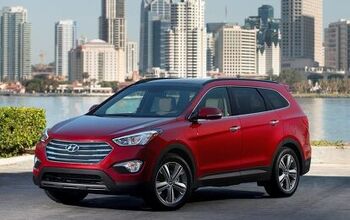
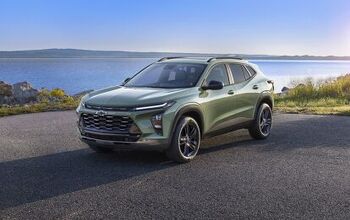

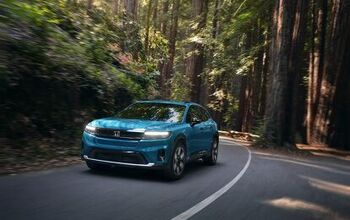
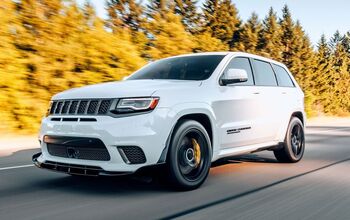


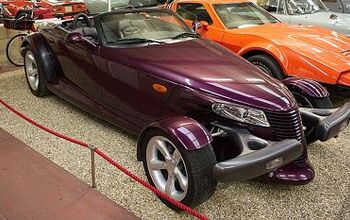







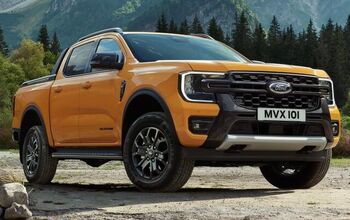


Comments
Join the conversation
I'm on my second hatchback now, and couldn't conceive of having anything else now. I am Canadian, though. Happy Thanksgiving to all my Canadian friends in here!
This thing screams copycat. Even the LCD in the middle of gauges has a template identical to VW. Pathetic how Koreans cannot definetheir own image.